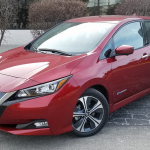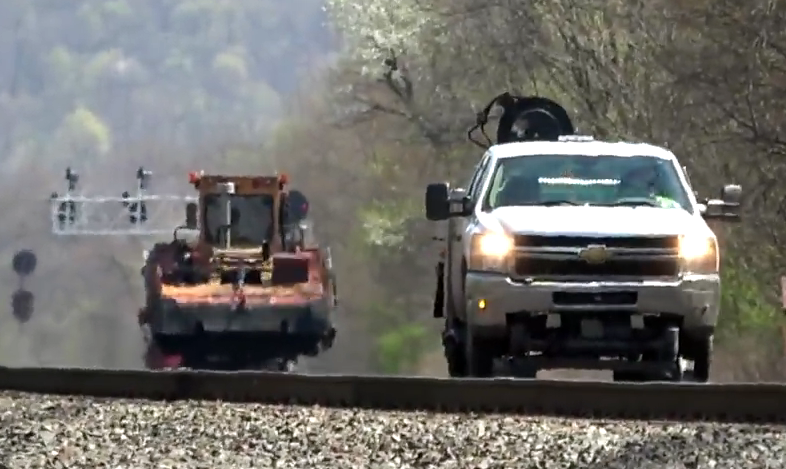
I have a number of automotive fantasies, many of which fall into the “never gonna happen” category. Among these daydreams are commuting to work in a Mercedes-Benz Unimog, and driving with Grace Kelly to get a malt at Chicago’s Superdawg Drive-In in a Mercedes-Benz 300SL Gullwing.
How Hi-Rail Pickup Trucks Work
A couple of fantasies on the “could happen” list include owning a gold Firebird like Jim Rockford’s, and driving a road-rail pickup on the train tracks that run from my house in suburban Chicago into the city.
Because I commute alongside those tracks every workday, I see my share of white Union Pacific pickup trucks scooting along them, slowing as they approach cross streets because the trucks don’t trigger the crossing gate sensors.
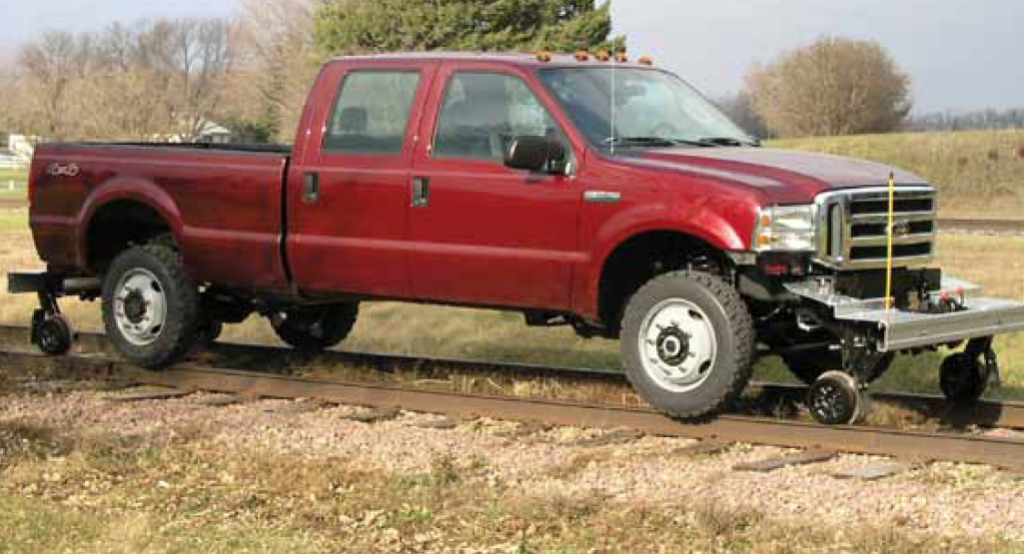
I’m not a “foamer,” as rail fans describe the most ardent train hobbyists, but I can’t ignore how cool pickup trucks look motoring down the same smooth, straight rails that guide ten-car Metra trains ushering commuters to and from the city.
At first glance, there doesn’t seem to be much to converting a pickup into a road-rail truck (or hi-rail truck, as they are often known)—just some steel wheels and a jacking mechanism, right? Turns out, the process is a little more complicated than that—and the impact on the pickup itself is not insignificant.
While all sorts of commercial vehicles are converted for rail service, pickup trucks are the most common. Hi-rail pickups are perfect for rail-inspection duty, as well as transporting track maintenance crews to on-rail work sites.
One popular conversion is the HY-RAIL package manufactured by the Harsco Corporation of Columbia, South Carolina. Although Harsco makes the equipment, trucks can be upfitted for hi-rail service at a number of authorized service facilities nationwide.
Here’s what’s involved in converting a pickup truck for rail duty:
Modular Misfit: The Forgotten Ford V10
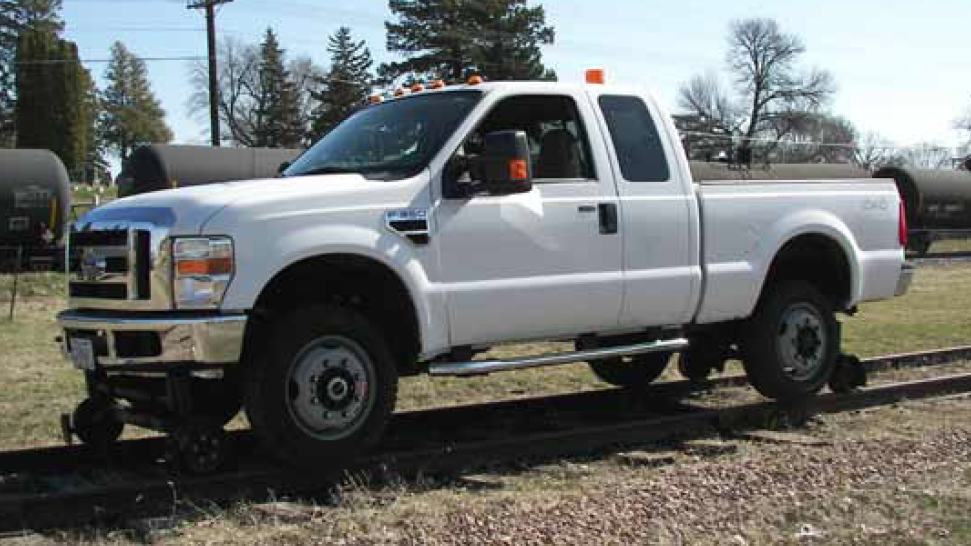
Install Guide Wheels
These are just like train wheels, as they are designed to fit the same rails, but on hi-rail vehicles they measure just ten inches in diameter. The total weight of the wheels and jacking equipment ranges from around 800 to 1000 pounds.
Less-expensive conversions incorporate a manual jacking system, requiring someone to step out of the truck to crank down the guide wheels. More expensive systems use a hydraulic jack, and may have a coil suspension, as well.
Insulate Guide Wheels
To prevent the hi-rail truck from triggering crossing-gate operation or setting off other sensors, all four guide wheels are insulated to impede conductivity.
Replace Stock Pickup Wheels
Because standard railroad tracks in North America put the rails 56.5 inches apart—and because the wheel track of the average ¾ or 1-ton pickup is around 69 inches—special wheels with significant positive offset are installed to move the tire surfaces closer together and close that gap. Ideally, a hi-rail’s tires are centered on the rail once the truck is moving.
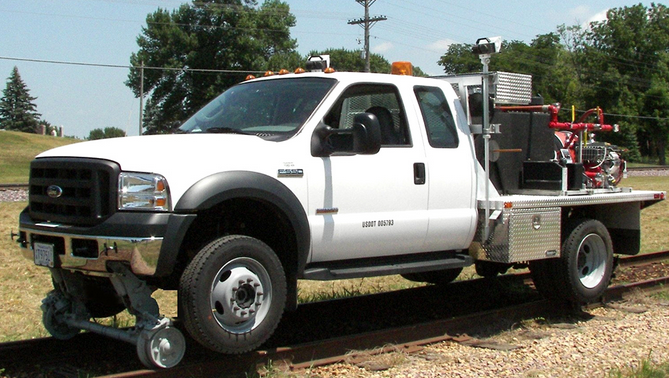
Install Steering Lock
Once a hi-rail truck is underway, the train rails take over directional control, so no steering inputs are necessary. To prevent accidental steering of any sort, a steering-wheel lock is installed.
…
The Downside of Owning a Hi-Rail Pickup
With the good comes the bad, and the bad in the case of owning a hi-rail pickup is considerable. First, you now have a truck that weighs half a ton more than it did when new, a factor which affects fuel economy and handling. And, because that weight is concentrated at the ends of the vehicle, the truck is prone to nose dive in braking, and plowing in fast corning. For best results, just avoid fast cornering.
Also, because the front track of the truck has been reduced, the tires are now closer together, meaning that they can’t turn as far in as they did on the original-equipment wheels. This means the pickup is much harder to park and maneuver through tight spaces.
Finally, unless you are actually authorized to use your hi-rail truck on train tracks, you’re better off staying on the road. Rail-enthusiast messages boards are brimming with stories of people hitting the tracks in hi-rail pickups, only to learn that the law takes a dim view of recreational rail running. Criminal trespassing and reckless endangerment are just a couple of the charges you’re likely to be dealing with.
The truth is, for as cool as rail running in a hi-rail looks, it probably gets old pretty quickly. The ride is described as stiff, the noise from the wheels high, and driving the truck on pavement is no joy either.
I’m still keen to give this a try someday, but I have no plans to actually purchase a hi-rail vehicle of any sort. Now, as for the Rockford Firebird, that’s still in the works…
Power-to-Weight Ratio Comparison: 4 Decades of Fords
Railroad Crossing Madness! Car Ads Featuring Cars and Trains

